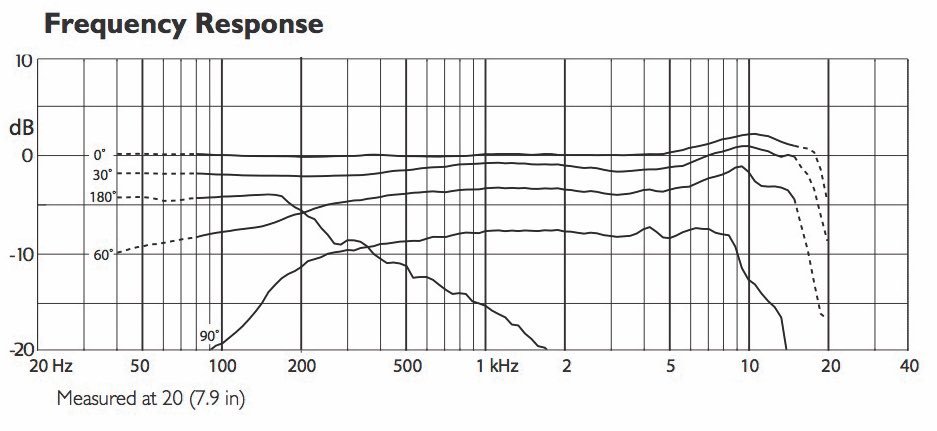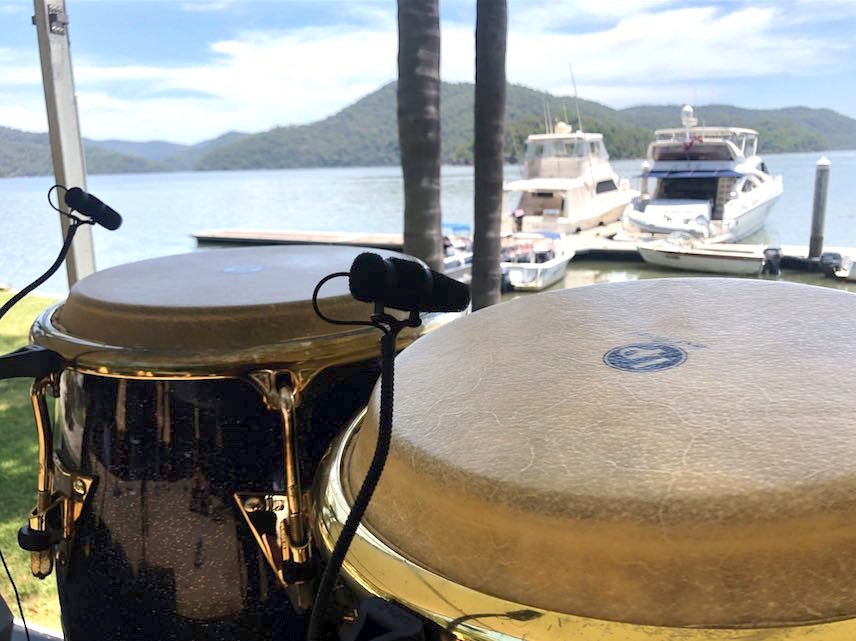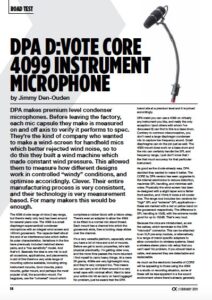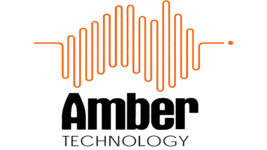News
14 Feb 2019
DPA d:vote CORE 4099 Instrument Microphone
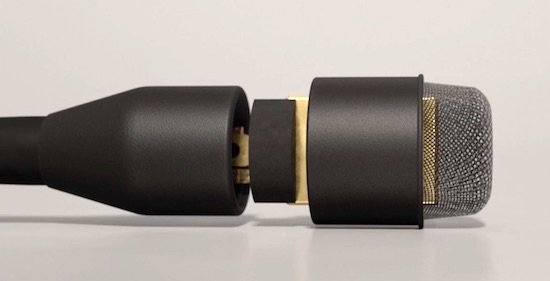
Subscribe to CX E-News
ROAD TEST
DPA d:vote CORE 4099 Instrument Microphone
by Jimmy Den-Ouden.
DPA makes premium level condenser microphones. Before leaving the factory, each mic capsule they make is measured on and off axis to verify it performs to spec. They’re the kind of company who wanted to make a wind-screen for handheld mics which better rejected wind noise, so to do this they built a wind machine which made constant wind pressure. This allowed them to measure how different designs work in controlled “windy” conditions, and optimise accordingly. Clever. Their entire manufacturing process is very consistent, and their technology is very measurement based. For many makers this would be enough.
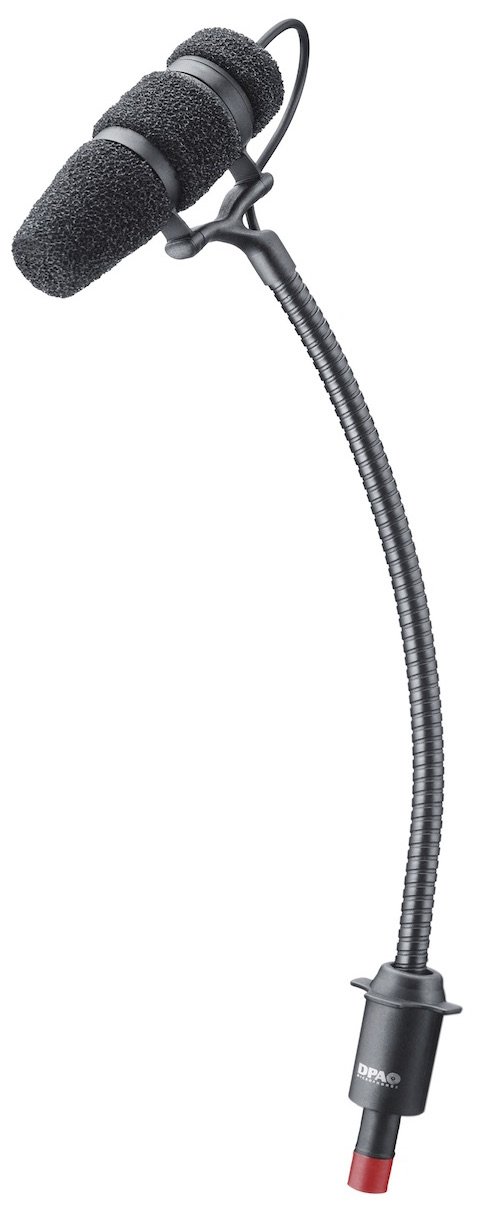 The 4099 d:vote range of mics (I say range, but there’s really only two) has been around for several years now. The 4099 is a small diaphragm supercardioid condenser microphone with an integral wind screen and 140mm gooseneck.
The 4099 d:vote range of mics (I say range, but there’s really only two) has been around for several years now. The 4099 is a small diaphragm supercardioid condenser microphone with an integral wind screen and 140mm gooseneck.
The capsule itself sits at the end of an interference tube which define its polar characteristics. Variations in the line have previously included matched stereo pairs, and a “low sensitivity” model. And that’s it.
Basically the idea is one mic to suit all occasions, applications, and placements.
In aid of this there’s a very wide range of mounting options available, including string instrument mounts, drum mounts, piano mounts, guitar mount, and perhaps the most popular of all, the accordion mount. For bagpipes, use the “universal” mount which comprises a rubber block with a Velcro strap.
There’s even an adapter to allow the 4099 to be fitted to a normal mic stand thread.
Each mount has a channel into which the gooseneck slots, then a locking clasp slides over the channel.
It’s a very versatile platform, especially when you have a lot of mics and a lot of mounts. Before we get to sonic properties, let’s talk physical practicality.
I’m getting older now, and the more time passes the more reluctant I find myself to carry heavy things. At a mere 28 grams, 4099s are very lightweight mics, and they’re very compact too. This means you can carry a lot of them around in a very small case with minimal effort.
Want to take your entire mic kit as carry on hand luggage? No problem, just be aware that the DPA brand sits at a premium level and it is priced accordingly. DPA insist you can use a 4099 on virtually any instrument you like, and really the only exception I (and others with whom I’ve discussed it) can find to this is a bass drum.
Contrary to common misconception, you don’t need a large diaphragm condenser mic to capture low frequency sound. Small diaphragms can do the job just as well. The 4099 mount does work on a bass drum and the mic can certainly handle the SPL and frequency range, I just don’t know that I like that much accuracy for that particular instrument.
As good as the d:vote already was, DPA decided they wanted to make it better.
The CORE by DPA version has seen upgrades to the internal electronics to reduce distortion, maximise SPL handling, and minimise self-noise. Physically the wind-screen has been re-designed with a slight taper and a flatter front section, and I think it looks a bit cooler now.
The range now includes two versions for “high” SPL and “extreme” SPL applications – these are marked with a red or yellow band on the gooseneck respectively. The difference in SPL handling is 10dB, with the extreme model good for up to 152dB.
That’s very loud.
Because the mics are miniaturised, so are the cables, which terminate to the DPA “microdot” connector. This can be attached to an XLR pre-amp module, or alternatively to a range of brand specific adapters to allow connection to wireless systems.
Need a wireless stereo piano mic setup that you can’t see? No problem. If you should trash a cable, rest assured they are detachable and replaceable.
As much as the electronic benefits of CORE will be appealing to those using the 4099
in a studio or recording situation, some of these will be less apparent in a live sound environment where there’s already generally a noise floor in the space.
Taking the CORE 4099 to a gig and putting it next to a previous generation unit, I noticed the side axis rejection seems gentler on the CORE model than on my older versions.
Since it was a rainy day at my outdoor gig that day, perhaps one of the most appealing features to me in that instance was that the 4099 CORE version is IP58 rated. When you’re using a lot of high end mics outdoors there’s always a certain sense of apprehension which rolls in around the same time as the storm clouds. It’s nice to know that the gig will stop working well before the mic does.
Another common misconception about condenser mics is that they’re more prone to feedback, so let’s dispel that using some science.
On axis, the signal response of the 4099 CORE is effectively linear from 30Hz up to around 15kHz. There’s a little rise of around 3dB about an octave wide, centred about 9kHz – call it a presence boost. The off-axis response at 60 degrees from centre is essentially the same curve with an overall level reduction of 5dB.
At 90 degrees it’s about 8dB down, with the HF starting to fall off more rapidly above 10kHz. Compare this to a basic standard dynamic mic, and you’ll realise it’s very polite and well behaved.
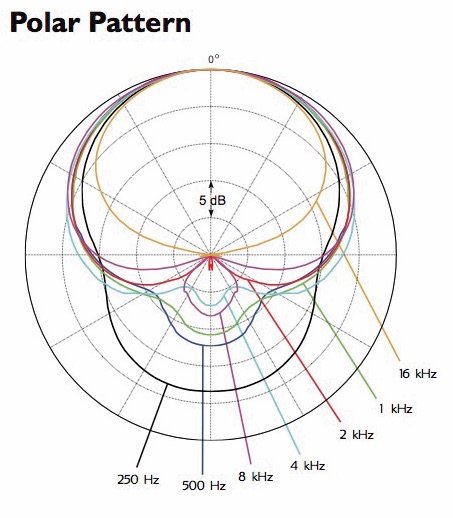 As with every supercardioid mic, there is a little rear lobe to the polar pattern of which you should be aware, but so long as you keep this in mind and don’t stick a wedge directly behind the mic it’s not a problem.
As with every supercardioid mic, there is a little rear lobe to the polar pattern of which you should be aware, but so long as you keep this in mind and don’t stick a wedge directly behind the mic it’s not a problem.
With thoughtful placement and good linear wedges it’s easy to achieve substantial gain before feedback on monitors using these mics with little or no filtering. Musicians generally appreciate being able to hear their instruments accurately on stage, so for them this is a huge win.
So far as FOH mixing goes, it’s wildly cool to be able to just push up the faders and have everything sounding pretty well right straight off the bat. With the combination of multi-track recording solutions being so easy to deploy and availability of high quality microphones, the opportunities for live content recording just keep increasing.
It’s an exciting time for the capture of great live music content.
It’s probably worth mentioning that if you put a really accurate mic like a 4099 onto a bad sounding instrument, you’ll get a louder version of the bad sound. Fortunately though if you’re using premium mics chances are you’re probably dealing with a premium level act. Mostly these people have their instruments pretty well sorted, so “garbage in garbage out” isn’t much of a concern.
Ultimately the long and short of it is that the 4099 is a brilliantly versatile, accurate, and deployable mic. With the CORE edition DPA has taken a good thing and made it better.
Brand: DPA
Model: d:vote CORE 4099
Product Info: www.dpamicrophones.com
Australia: www.ambertech.com.au
New Zealand: directimports.co.nz
From CX Magazine – February 2019. CX Magazine is Australia and New Zealand’s only publication dedicated to entertainment technology news and issues – available in print and online. Read all editions for free or search our archive www.cxnetwork.com.au
© CX Media
Subscribe
Published monthly since 1991, our famous AV industry magazine is free for download or pay for print. Subscribers also receive CX News, our free weekly email with the latest industry news and jobs.

